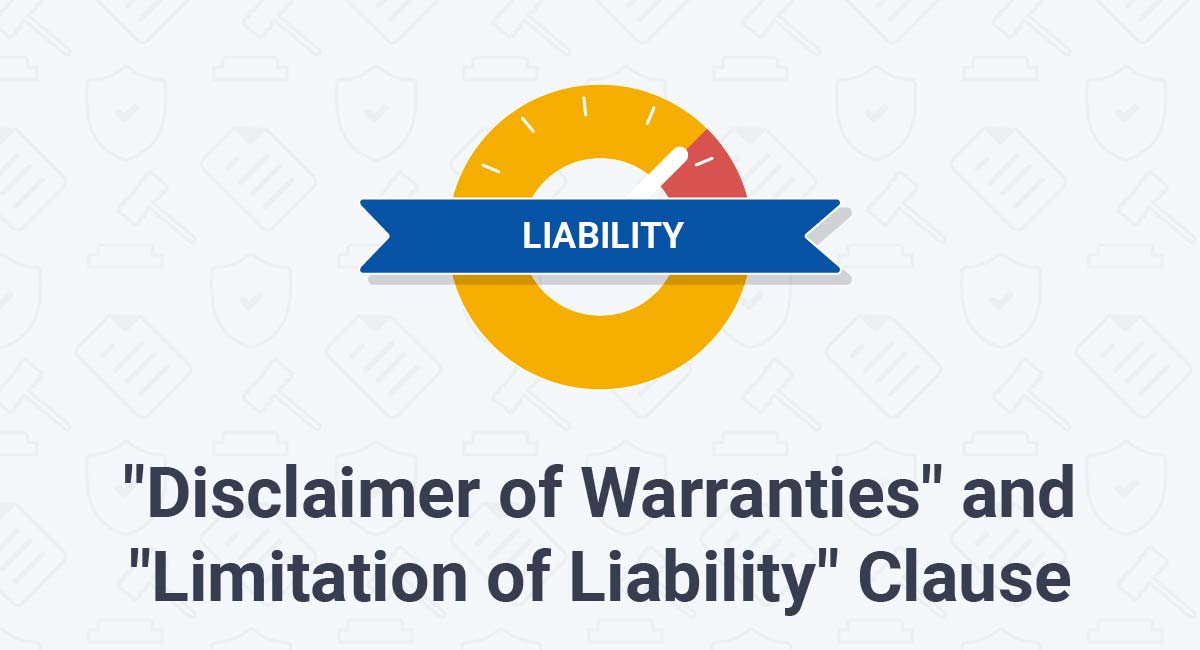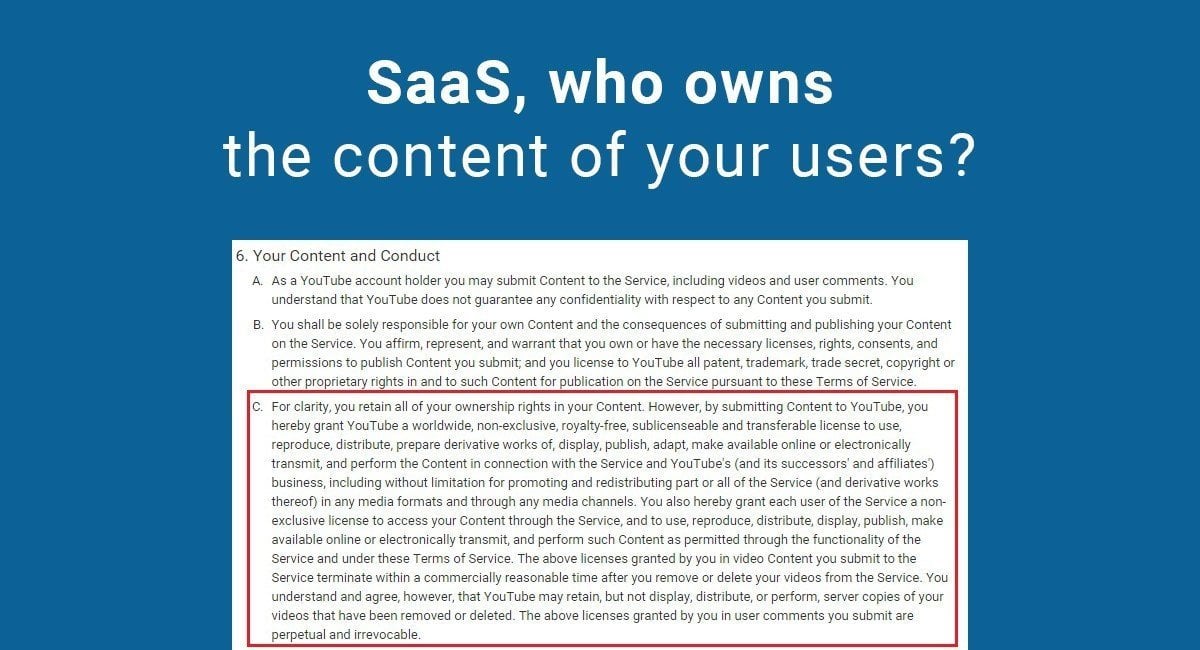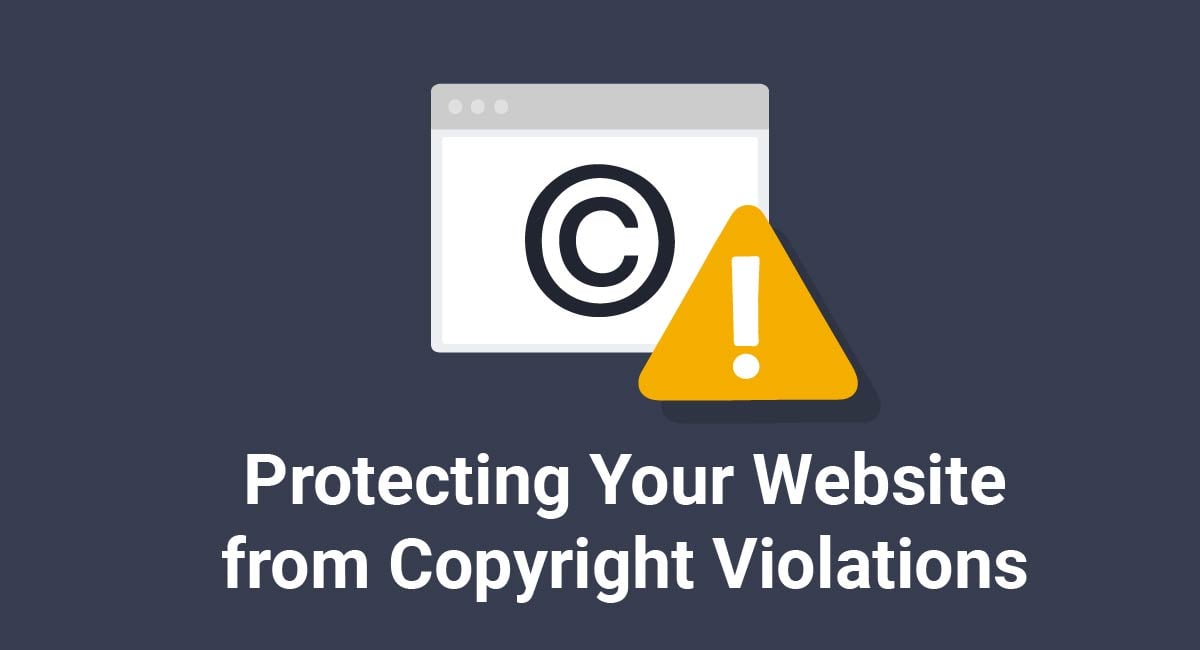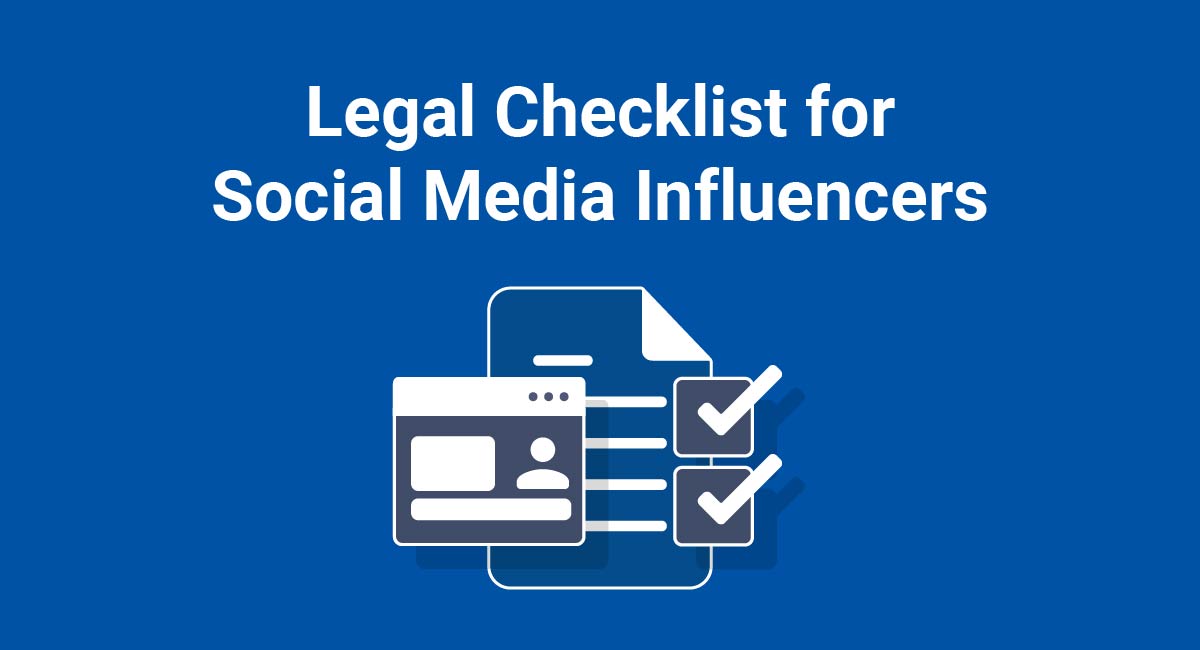A Terms and Conditions agreement can help protect you against a wide variety of legal actions, from litigious users and customers.
Having one isn't legally required, but it can be useful in deterring and responding to legal actions. It also provides guidelines that establish what to do in the case of a dispute, and what each party is responsible for if there is an issue. A Terms and Conditions agreement is also known as a Terms of Use agreement or a Terms of Service agreement.
One important section of a Terms and Conditions agreement is the Disclaimer of Warranties and Limitation of Liability clause.
Let's take a deeper look at what purposes this clause serves and what information yours should contain.
Our Terms and Conditions Generator makes it easy to create a Terms and Conditions agreement for your business. Just follow these steps:
-
At Step 1, select the Website option or the App option or both.
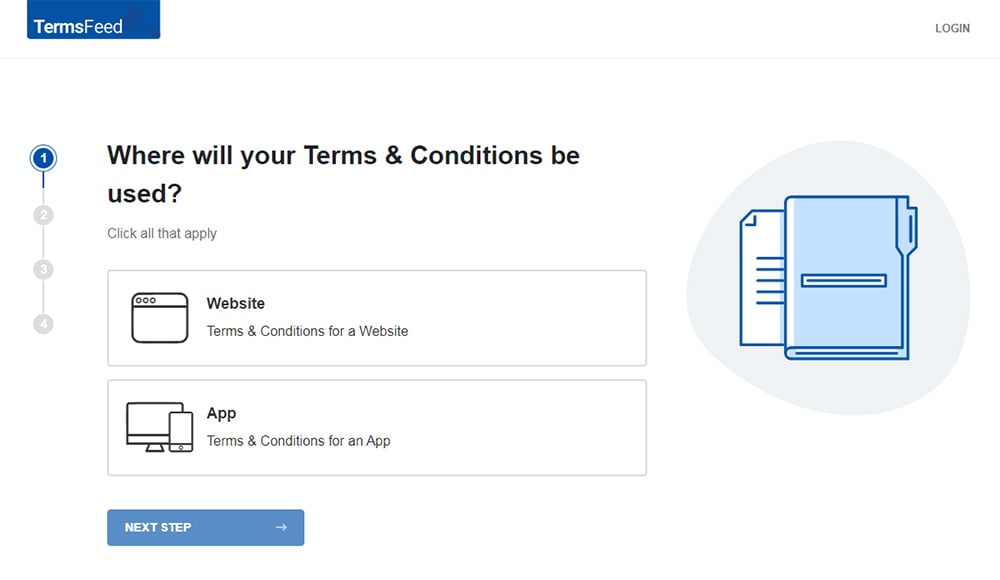
-
Answer some questions about your website or app.
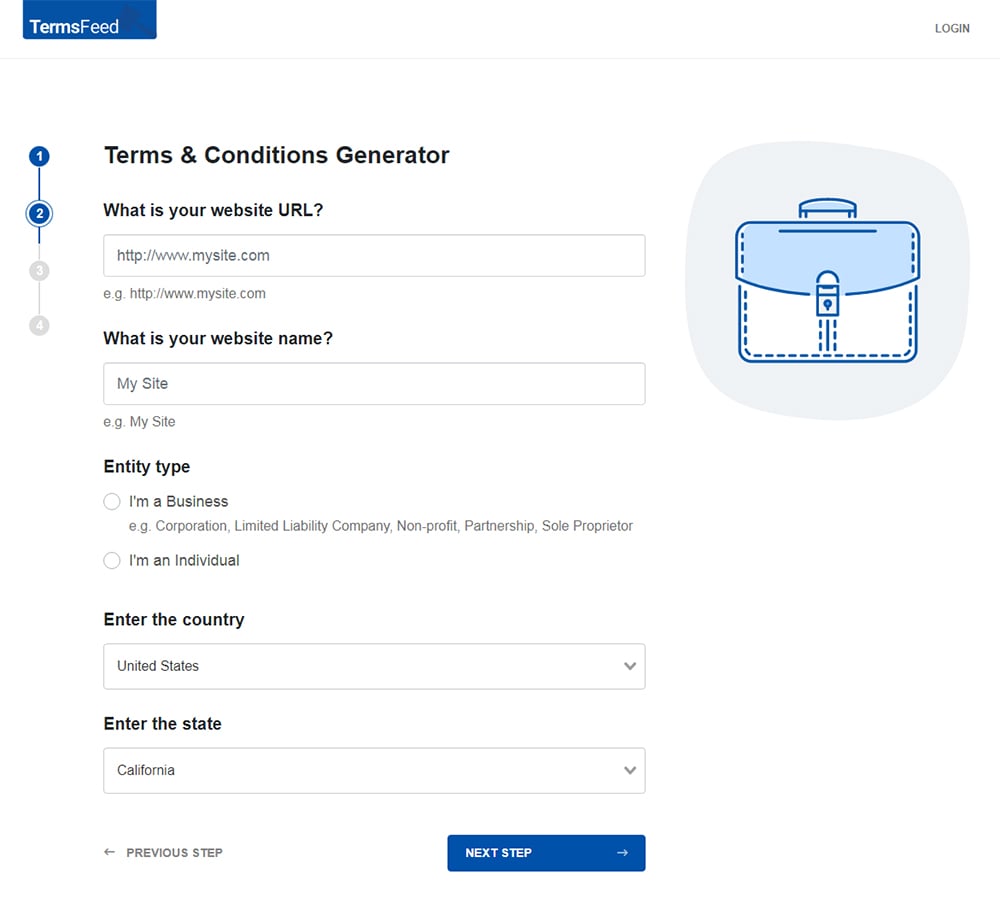
-
Answer some questions about your business.
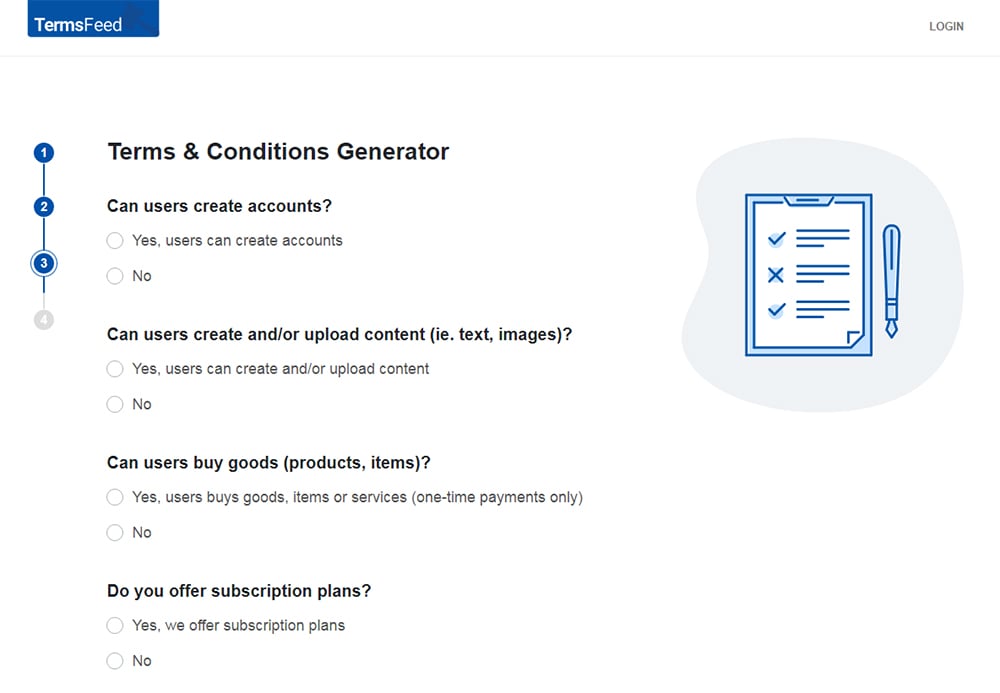
-
Enter the email address where you'd like the T&C delivered and click "Generate."
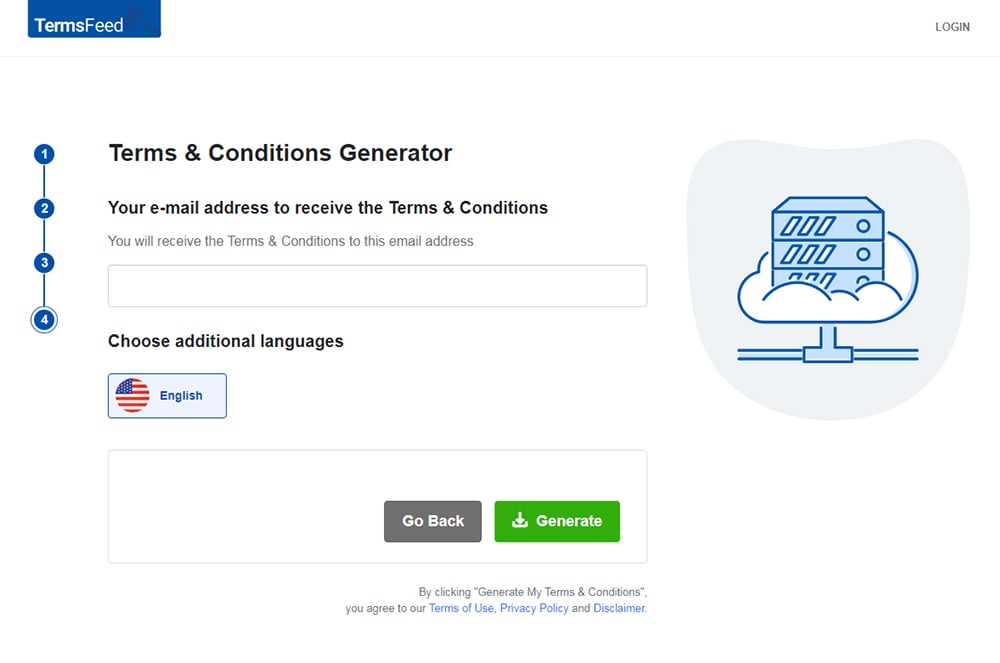
You'll be able to instantly access and download the Terms & Conditions agreement.
- 1. What is a Disclaimer of Warranties and Limitation of Liability Clause?
- 2. What's in a Disclaimer of Warranties and Limitation of Liability Clause?
- 2.1. "As Is" and "As Available" Basis
- 2.2. No Warranty of Operation Without Errors
- 2.3. Sole Risk
- 2.4. No Warranties, Express or Implied
- 2.5. No Liability for Specific Damages
- 2.6. Maximum Liability
- 2.7. Malware and Other Hazards
- 3. Summary of Disclaimer of Warranties and Limitation of Liability Clauses
What is a Disclaimer of Warranties and Limitation of Liability Clause?
This clause can protect you from liability in the case that a user has a negative experience with your website. Like the Terms and Conditions agreement in general, this clause isn't required, although it can be very important.
Someone visiting your website could face any number of problems. They might:
- Click a third-party link from your website and then download a virus from that website
- Connect to someone unscrupulous through your website
- Make decisions based on out-of-date information you previously published
- Lose business due to your website's downtime
In cases like those above, it's best to make sure that you are not held liable.
What's in a Disclaimer of Warranties and Limitation of Liability Clause?

"As Is" and "As Available" Basis
A Disclaimer of Warranties and Limitation of Liability clause often begins with language that specifies services are available on an "as is" and "as available" basis. This is simple but key phrasing that quickly establishes the tone the rest of the clause is built on. There are two key pieces here:
First, "as is" means exactly what it does if you sell a house or a car to someone "as is:" If they run into issues using what you provided them, they agree not to hold you liable for harms that arise from those problems. The user accepts that they may have problems when using your website, and they will not take action against you if that is the case.
"As available" may be a less familiar phrase. If you only provide services "as available," that means you have one less thing to worry about if your website might become unavailable due to regularly scheduled maintenance or infrastructure issues. Those who agree to this clause will not hold you liable for issues they encounter due to your website being unavailable.
Amazon Services includes this type of language in its Disclaimer of Warranties and Limitation of Liability clause. You'll notice that it also allows itself a little breathing room with language immediately afterward that says "unless otherwise specified in writing."
While this is common and can be helpful for clarity, it's not always necessary:
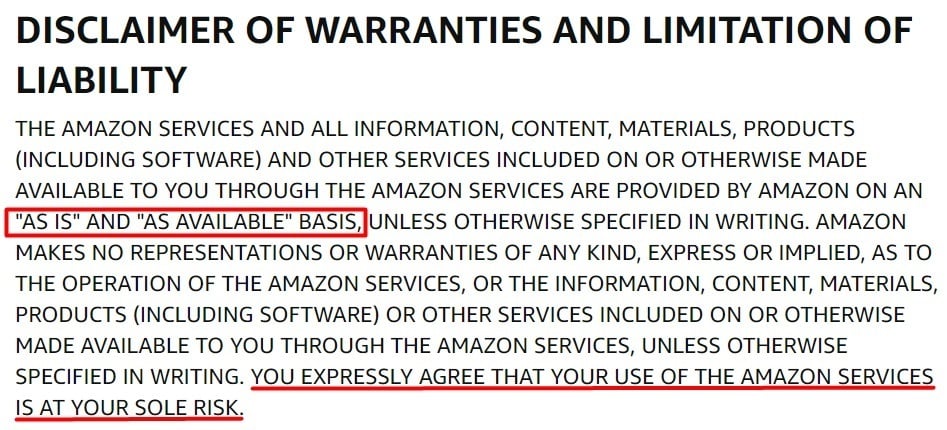
No Warranty of Operation Without Errors
"As is" and "as available" language is almost standard in a Disclaimer of Warranties and Limitation of Liability clause, but there are other ways of accomplishing the same thing.
Another way of phrasing the clause is with a sentence that says your system or service is not guaranteed to operate without errors. That accomplishes the same purpose as an "as is" clause, stating that while errors may be present, you cannot be held liable for issues they cause.
You can add additional language saying that you cannot promise the services will be available and in working condition all the time. This does the same thing as saying the user can access the services "as available" and protects you in case of planned and unplanned website downtime.
One way of phrasing the language above is by saying you "cannot warrant" operation without errors and availability at all times.
This clause from the Community Trust Bank Terms and Conditions agreement accomplishes this in more plain language than the Amazon clause from before:

Sole Risk
The Amazon example from section 1 also uses the phrase "sole risk" to describe the extent to which the user is liable for any harms that result from the use of the website. This is often paired with "as is" and "as available" language to establish that the website may have issues, and the user accepts the risk associated with those potential issues.
A sentence saying that the user uses the site at their "sole risk" will need further clarification, but establishes from the top that you and your site are not liable for harms that come from the use of the site. It communicates to users in general terms what the rest of the paragraph specifies: that they cannot hold you responsible for any issues that arise from the use of your site.
Like Amazon's, Lee's Grain Free's Disclaimer pairs the "sole risk" phrase with "'as is' and 'as available'" language. This language expands on the same point: you are not responsible for any problems others have when using your site, including scheduled and unscheduled downtime. You can see this in this portion of Lee's Grain-Free's Disclaimer of Warranty and Limitation of Liability:

No Warranties, Express or Implied
Another common introductory sentence is one that specifies that you do not make any guarantees about how users will find your website's services. Usually, this will address "implied warranties" or assumptions that customers may make that the product or website is fit for the purpose for which it is intended.
While it is likely in your business interests to build a website that meets your users' expectations, it is not a legal requirement and this part of the clause says you can not be sued for not making your website what a user thought it would be. One way of doing this is by saying you make "no warranties, express or implied" or other promises about how others will use your services.
After this clause, it's common to specify types of warranties, especially implied warranties, that customers might think are included despite your broad language. There are different types of express and implied warranties, so you may want to look into which would be most useful for you to specify in your own clause.
Microsoft combines this warranty language with other key parts of a Disclaimer of Warranties and Limitation of Liability. It includes "as is" and "as available" language, specifies that use is at the risk of the user, and that services may have errors and breaks in service:

By being thorough in this way, Microsoft both makes the language more clear and makes the overall agreement more airtight.
No Liability for Specific Damages
Even after language stating that the user understands your website may have errors, gaps in service, that they use it at their own risk, and that there are no express or implied warranties, it's very common to state that you cannot be held liable for specific types of damages. This is the core of the "Limitation of Liability" side of a Disclaimer of Warranties and Limitation of Liability clause.
There are many types of legal damages, but common damages to list in this clause are:
- Direct
- Indirect
- Consequential
- Special
- Punitive
- Compensatory
You may want to consult with a professional if you aren't sure what types of damages you should specify in your own clause.
In the Limitation of Liability section of Comcast's Enterprise Services General Terms and Conditions, Comcast applies the clause to both itself and its customers. It excludes both itself and users from specific types of damages, and then lists ways that such damages might come about (e.g. loss of revenue and other losses):

In examples like this where you include your customers in the Limitation of Liability, it's important to include language like Comcast's that holds customers liable for what they owe. After all, you don't want to exclude customers from liability for failing to pay you.
Maximum Liability
Even though you aren't liable for the above types of damages, it's common for vendors to put a ceiling on the amount of compensation that an unhappy user can ask for.
This is typically done with a section that specifies a maximum amount of liability that you can refund your user. The maximum liability can be either a flat amount (e.g. $10,000) or a variable amount (e.g. a portion of the price paid by the customer).
In any case, it can be used as a guideline for a reasonable settlement if you do decide to pay a customer for damages or refund them.
Although much of the language discussed to this point is meant to prevent you from being held liable for any damages, this part of the clause exists as a "just in case" measure.
Certain types of clauses may vary in enforceability between jurisdictions, so it is best to have this type of language backing up your Disclaimer of Warranties and Limitation of Liability Clause. The specific amount named may vary depending on the product or industry.
In Stoneridge's Disclaimer of Warranty and Limitation of Liability below, it specifies a maximum refund of the total price the customer paid. This is a common amount to specify, although it can vary between industries:

Malware and Other Hazards
All the above components are very common among Terms and Conditions agreements. However, there are other, less common pieces you may find worth including as well.
While the previous parts of a Terms and Conditions Agreement are not required but fairly standard, these can be specific to your particular case. One example is language on malware and other hazards of doing business over the internet.
When conducting business online, both parties understand that there is an inherent risk involved. If you conduct an ecommerce business, you may want to consider including language that acknowledges that risk. If a customer is victimized by a third party, this can help clarify any arbitrations or discussions over who is at fault and whether you owe the customer for any damages that may have occurred.
Macys' Terms of Use Legal Notice includes this type of language. Specifically, it says that it makes no warranties that the website or emails sent from Macys have no malware. You may recognize that type of language from above, because it is a part of the more standard "No warranties, express or implied" sentence that these clauses often include.
You can find the relevant excerpt from the Macys' Terms of Use Legal Notice below:
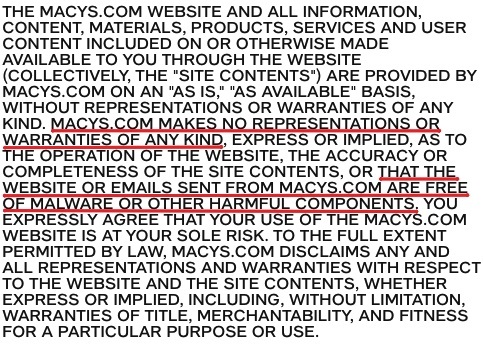
Summary of Disclaimer of Warranties and Limitation of Liability Clauses
Here are the key components of a Disclaimer of Warranties and Limitation of Liability clause:
- Services are available on an "as is" and "as available" basis
- There is no warranty of operation without errors
- The user bears sole risk for use
- You make no warranties, express or implied
- You cannot be held liable for specific types of damages
- There is a maximum amount of liability to which you can be held
- Specific hazards like malware may be present
Including this clause in your Terms and Conditions agreement can help you avoid legal liability while also helping to manage your customers' expectations when it comes to what exactly you'll be held responsible for.
While the language tends to be fairly standard across the board with such clauses, you may have less or more information in your clause depending on what industry you're in as well as the nature of your specific business.

Comprehensive compliance starts with a Privacy Policy.
Comply with the law with our agreements, policies, and consent banners. Everything is included.
